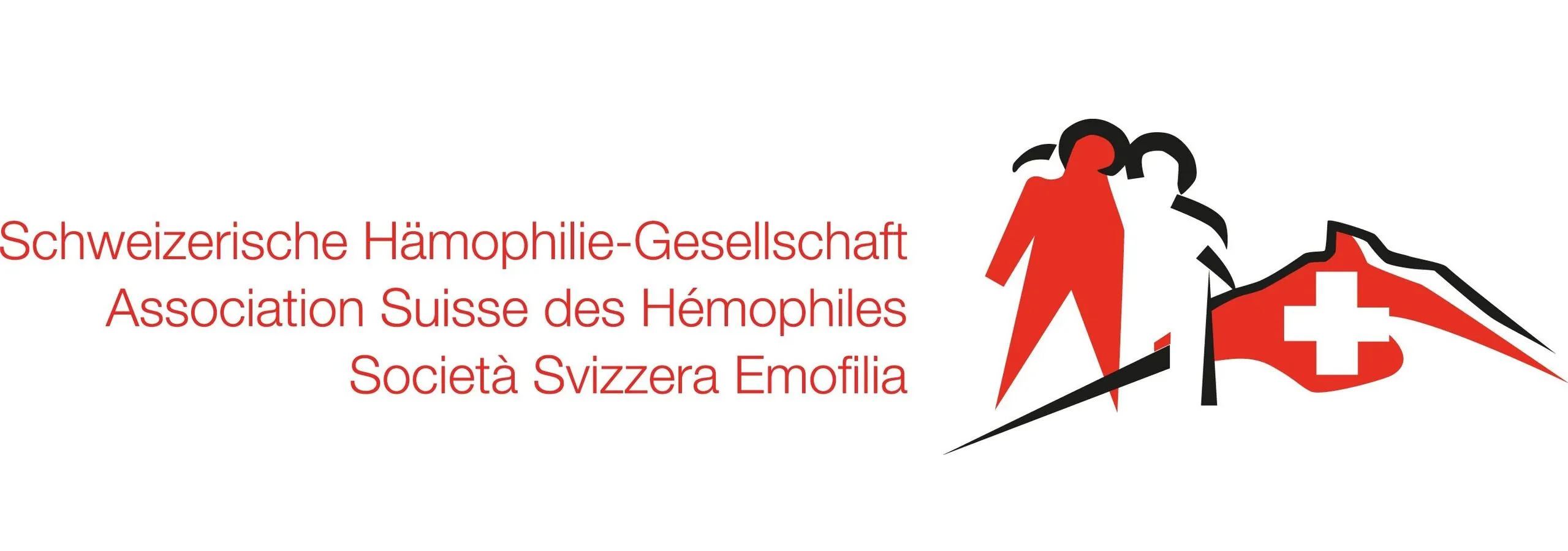
Haemophilia:
symptoms and treatment
In haemophilia, blood clotting does not work properly due to a genetic defect, making it difficult to stop bleeding. Haemophilia usually affects men. What many underestimate is that women with the corresponding gene mutation may also have an increased tendency to bleed.
Haemophilia is one of the rare (orphan) diseases. In Switzerland, some 750 patients are recorded in the national haemophilia register. According to statistics, one in 10,000 male babies is born with haemophilia. Women usually do not develop haemophilia, but can pass on the disease as a carrier. However, in some cases women also develop symptoms.
Approximately 80% to 85% of those affected have haemophilia A (caused by a shortage of coagulation factor VIII). The second most common form is haemophilia B, which results from a lack of coagulation factor IX. Disorders of other coagulation factors, such as factor VII, are very rare.
In severe cases, haemorrhages may occur even without recognisable external influences (spontaneous haemorrhage). Haemorrhages in organs such as the brain are particularly feared, but these occur rarely. Bleeding in the muscles and joints (most frequently in the knees, elbows or ankles) may also occur and is more common.
Joint bleeding, which manifests as severe pain and rapid swelling, causes great damage in the long run. It can lead to joint wear and tear (osteoarthritis) and the associated loss of function, including physical disability.
In the vast majority of cases, a genetic defect means that the liver is unable to produce the appropriate coagulation factor, or cannot do so in sufficient quantities. The mutations are located on the X chromosome, the female sex chromosome.
Women pass on one of the two X chromosomes to their offspring. Thus, the probability of a male child (with the chromosome pair XY) becoming a haemophiliac is 50%. If the defective X chromosome is passed on to a female child (with the chromosome pair XX), it is “overlaid” by the healthy X chromosome. The girl becomes a carrier and can pass on the genetic defect to her offspring, but usually does not fall ill herself.
Pregnant female carriers can use prenatal diagnostics to determine whether their child has haemophilia. If it does, they should contact a haemophilia centre to prepare optimally for the birth. If the pregnancy progresses without complications, it is usually possible to give birth without a Caesarean section.
Haemophilia can be diagnosed in two ways:
- Blood test: the activity of the coagulation factor in plasma is measured.
- Genetic testing: the defect is detected in the gene.
Haemophilia should be treated by specialists, ideally at a haemophilia centre.
Due to the specific medical features of the disease, the general practitioner and the haemophilia centre should be in close contact. Those affected can order an emergency card with relevant health information from their treatment centre. They should carry this card with them at all times.
Classic treatment
The medical standard for haemophilia is substitution therapy. Under this regimen, the missing coagulation factors are injected into the body intravenously in the form of factor concentrate.
There are two forms of treatment:
- On-demand treatment is used to stop acute bleeding or prepare for surgery. This form of therapy is often sufficient for mild haemophilia.
- Long-term treatment (prophylaxis) protects patients with severe haemophilia from severe (spontaneous) bleeding and joint damage. Those affected must inject the factor concentrate several times a week.
A serious complication of substitution therapy is inhibitor formation, when the immune system recognises the coagulation factors as foreign bodies and forms inhibitors to fight them. This results in inhibitory haemophilia, which makes conventional therapy more difficult or even ineffective.
New treatments
Antibody therapy is now available to patients with severe haemophilia A and those with inhibitory haemophilia.
Haemophilia remains an incurable disease. Until the middle of the 20th century, however, haemophilia was an early death sentence – the average life expectancy was less than 20 years – but today, patients receiving optimal medical care can live just as long as the normal population.
Children with haemophilia can attend day care and school just like other children. Effective therapy minimises the restrictions on everyday life. However, sports with a high risk of injury (e.g. ice hockey) as well as physically demanding or potentially high-risk occupations such as construction are not suitable for haemophiliacs.
Despite effective therapies, the illness can be psychologically stressful for sufferers, carriers and relatives. Exchange of experiences between those affected can be an important support mechanism. There are various patient organisations both internationally and nationally for this purpose. In Switzerland, the Swiss Haemophilia Society is the point of contact for people with haemophilia and other congenital coagulation disorders and their relatives.
For more information and support services, please visit:
- Schweizerische Hämophilie-Gesellschaft: Hämophilie – Die Bluterkrankheit, unter: www.shg.ch (Abrufdatum: 08.12.2022)
- Barthels M, Wermes C, Voerkel W. Hämophilie. Deutsche Hämophiliegesellschaft zur Bekämpfung von Blutungskrankheiten. 1. Auflage 2015
- Deutsche Hämophiliegesellschaft zur Bekämpfung von Blutungskrankheiten: Therapieprinzipien – Hämophilie, unter: www.dhg.de (Abrufdatum: 08.12.2022)
- Wirtschaftliche Landesversorgung Fachbereich Heilmittel: Blutgerinnung – Bericht über die Versorgungsrisiken mit Blutgerinnungsfaktoren: Neubeurteilung 2017, unter www.bwl.admin.ch (Abrufdatum: 08.12.2022)
- Paul-Ehrlich-Institut: Erstes Gentherapeutikum gegen Hämophilie A erhält Zulassung, unter: www.pei.de (Abrufdatum: 08.12.2022)



